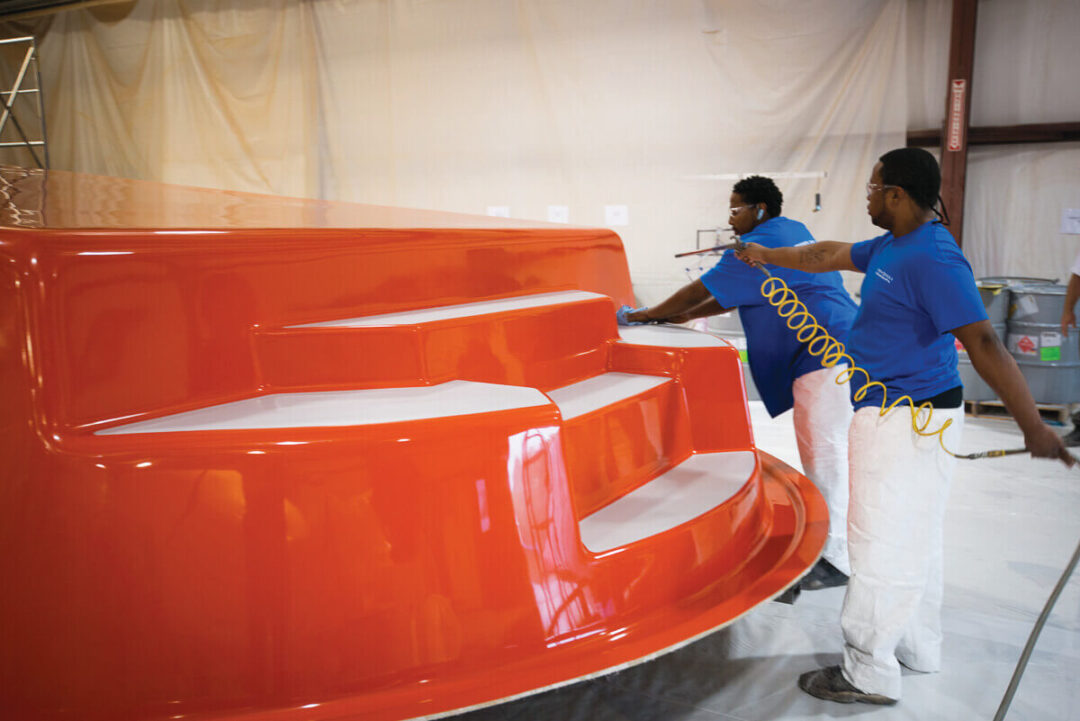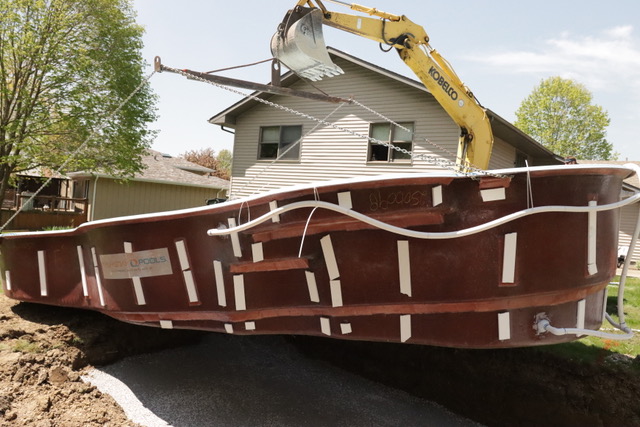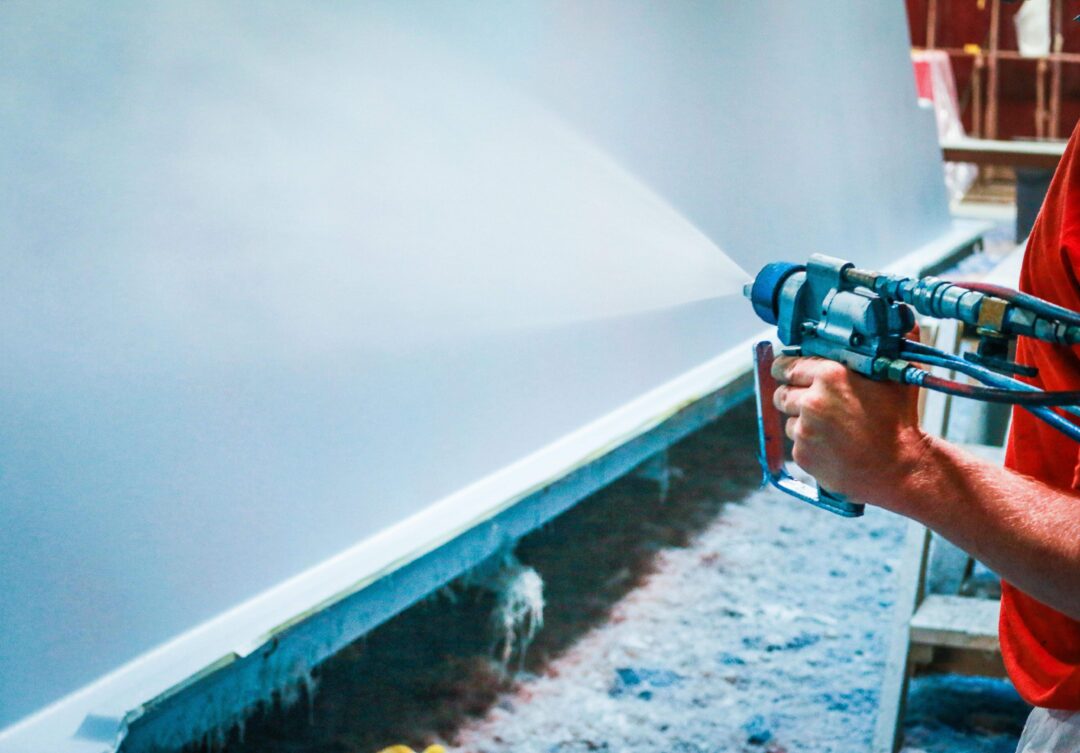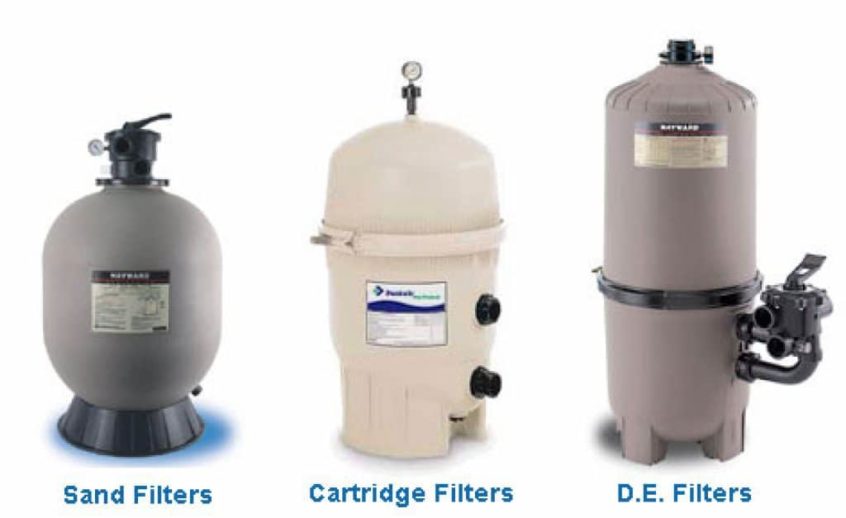Fiberglass Pool Maintenance: How To Master Your Pool

If you’re thinking about purchasing an inground fiberglass pool, you may be wondering what maintenance these pools require. For a lot of homeowners, the amount of maintenance required is one of a few key factors that determine whether or not they will actually purchase a pool. Some other factors include:
- Cost
- Functionality
- Customizability
You may have heard that fiberglass pools require less maintenance than other pool types. Sounds great, right? The truth is, no pool is a maintenance-free product.
Fiberglass pools are both highly durable and relatively easy to care for. These advantages come from their unique manufacturing process (more on that later). An inground fiberglass pool is a massive investment – think of it like the Ferrari of inground pools. Like a Ferrari, or any top-of-the-line product, fiberglass pools do need some tender love and care from their owner.
That’s what this article is all about. This guide covers the essential fiberglass pool maintenance tasks, including
- Managing water chemistry
- Protecting the gel coat
- Maintaining the filtration system—whether it’s cartridge, sand, or diatomaceous earth (D.E.)
- Skimming, brushing, and vacuuming
At Royal Pools G2 Landscaping, we have been installing and servicing fiberglass pools for over 25 years. We’ve learned a thing or two about taking care of them in that time. So without further ado, let’s dive in!
Understanding the Fiberglass Pool Advantage

When looking at how inground pools are built and installed, you’ll notice that fiberglass pools are a little different than the others. They’re technically still the baby of the inground pool world. For years, concrete and liner pool builders lamented fiberglass pools as “bathtubs in the ground”, or not “real” pools. Part of this rhetoric came from them being built so differently than concrete and liner pools.
Fiberglass pools are built in controlled warehouses that specialize in fiberglass construction and then transported to the installation site. They feature a smooth, non-porous gel coat surface. This surface is resistant to algae growth and reduces the need for so many chemicals.
Fiberglass pool manufacturers create these pools to require less maintenance than concrete and vinyl liner pools. But like we said, a little TLC from the homeowner goes a long way in maximizing the benefits of a fiberglass pool.
Water Chemistry: The Core of Fiberglass Pool Maintenance
Water chemistry is crucial for maintaining a healthy and inviting swimming environment. Unlike concrete pools, which can be more susceptible to algae growth due to their porous surfaces, fiberglass pools offer a smoother finish that helps keep algae at bay. Homeowners still need to monitor and balance the water chemistry regularly.
The key components of water chemistry include pH , alkalinity, calcium hardness, cyanuric acid (CYA stabilizer), chlorine or sanitizer levels.
Chlorine or other sanitizers are vital for keeping the water clean and safe for swimming. Regular testing of chlorine levels ensures that the water is free from harmful bacteria and contaminants. Ideally, chlorine levels should be maintained between 1 and 3 ppm.
In addition to these core elements, regular chlorine shock treatments can help eliminate any buildup of contaminants and keep the water crystal clear.
Key Chemical Levels:

- pH: 7.2 – 7.6. Balanced pH protects the pool gel coat as well as your equipment, keeps swimmers comfortable, and allows chlorine to do its job.
- Low pH means the water is acidic, high pH means the water is basic. Both instances can lead to itchy skin, eye irritation, and brittle hair. Acidic water can damage pool equipment beyond the gel coat, so it is vital to keep pH within range.
- Alkalinity: 80 to 120 ppm (parts per million) ensures pH stays in range.
- Alkalinity acts as a buffer for pH, helping to stabilize it.
- Calcium Hardness: Maintain calcium levels under 120 ppm for fiberglass pools.
- Too much calcium can cause the gel coat to fade over time. However, there are scale sequestrants that help prevent scaling in water with high calcium levels.
- Sanitizer (Chlorine, Bromine, Salt-Chlorine): Maintain appropriate sanitizer levels to keep water clear and safe.
- Pro tip: Saltwater pools aren’t chlorine-free. What makes a saltwater pool a saltwater pool is the salt-chlorine generator. These generators are plumbed into the pool equipment. They transform salt into chlorine as water passes through the cell using a process called electrolysis. The newly chlorinated water is then sent back into the pool.
- Chlorine: 1 – 3 ppm
- Bromine: 2 – 4 ppm
- Cyanuric Acid aka CYA (Stabilizer): 30 – 50 ppm.
- Especially important in outdoor pools to protect chlorine from UV degradation. Essentially, CYA protects chlorine from being eaten by the sun. However, an excess of stabilizer can cause chlorine to lose its sanitizing powers. Most chlorine tablets are comprised of trichloro-s-triazinetrione, which is highly stabilized chlorine.
Using a testing kit like test strips or a drip test, you should test your pool water a couple of times a week. Keep a close eye on the above-listed chemicals. If you’re swimming in the pool 3-4 times or more a week, we would recommend testing daily. Pool additions such as in-line chlorinators or floating chemical or mineral feeders can help minimize the need for weekly balancing.
Maintaining balanced water chemistry is the key to taking care of your fiberglass pool. Balanced pool water not only protects you and any swimmers, but it protects your pool equipment as well.
Protecting the Fiberglass Pool Gelcoat

The gel coat on a fiberglass pool serves both aesthetic and protective purposes. Here’s how to care for it:
- Avoid Abrasive Cleaners: Use non-abrasive, pool-safe products to clean the surface.
- Prevent Stains: Regularly brush your pool to remove organic debris. For stubborn stains, a mild gel coat-safe stain remover is best.
- Monitor Chemical Use and Avoid Calcium: Excessive or improper chemical use can dull the gel coat. Always follow dosing instructions and avoid shocking the pool during high heat or direct sunlight. Do not add calcium or use calcium-hypochlorite shock unless you are also using a scale-sequestrant chemical to prevent discoloration over time.
Maintaining Your Filtration System

If the pool pump is the heart of a pool’s filtration system, then the filter would be like the lungs, allowing your water to flow into the pool clean and free of debris. There are three main types of filters used in the swimming pool industry, including:
1. Cartridge Filters
To maintain a cartridge filter, begin by regularly checking the pressure gauge. If the pressure rises 8-10 psi above the normal operating level, it’s time to take apart the filter and clean the cartridge(s). Remove the cartridge from the filter housing and rinse it with a garden hose to remove debris. If the cartridges are super dirty, you can soak them in a filter cleaner solution for a few hours and then rinse thoroughly before reinstalling them.
How To Maintain A Cartridge Filter
2. Sand Filters
To maintain a sand filter, backwash it regularly— when the pressure gauge indicates a rise of 8-10 psi and after you vacuum the pool. Backwashing involves reversing the flow of water through the filter to flush out trapped dirt and debris. After backwashing, remember to rinse the filter for 15-30 seconds before resetting the filter to its normal position. Every 3-5 years, you should also replace the sand to ensure optimal filtration.
3. Diatomaceous Earth (D.E.) Filters
D.E. filters provide the finest filtration, capturing the smallest particles possible. To maintain a D.E. filter, you’ll also need to backwash and rinse the grids after you vacuum and whenever the pressure gauge indicates a rise of 8-10 psi. After backwashing and rinsing, you must recharge the filter with fresh D.E. powder. This involves adding the appropriate amount of D.E. through the skimmer while the pump is running. The amount of D.E. required will depend on the specific model of filter as well as the number of gallons in the pool. Regularly inspect the filter grids for tears or damage, as these can affect performance.
**General Tips for All Filters**
Regardless of the type of filter you have, it’s essential to keep an eye on the water chemistry and ensure that the pool is balanced. Proper pH and chlorine levels can help reduce the load on your filtration system, extending its lifespan.
Additionally, regularly skimming the surface of the pool, brushing the walls, and vacuuming the floor can help minimize debris, making your filter’s job easier. A safety cover, such as an automatic cover, will make this much less time-consuming. Regardless, it’s a good idea to do these things at least 3-4 times a month or more if you have a lot of swimmers. We recommend brushing the pool floors and walls whenever chemicals are added to the water.
Routine Maintenance Checklist
Here’s an easy weekly checklist to use to become a pro at fiberglass pool care:
- ✅ Test the water using an at-home pool test (test strips or DPD test kits are recommended) at least once a week to ensure that pH, alkalinity, calcium, CYA, and sanitizer levels are within the proper range for safe swimming.
- ✅ Inspect skimmer and pump baskets. Remove debris that gets stuck.
- ✅ Brush waterline, walls, steps, and floor gently with a pool brush.
- ✅ Monitor water level (at mid-skimmer or just above mid-skimmer is recommended).
- ✅ Check filter pressure to determine whether the filter needs cleaning.
Final Thoughts
There you have it, folks! These maintenance steps go above and beyond to help ensure you have the simplest fiberglass pool care experience as possible. Simple steps like weekly water testing, checking your filter pressure and cleaning said filter regularly, brushing the walls once a week, and monitoring your water level to ensure it’s at the right level will go a long way in keeping your pool clean, clear, and ready to swim in all summer long.
Need help with water testing or filter maintenance? Contact a certified pool technician or visit your local pool supply store for expert advice and products tailored to your specific setup. For more educational content on all things pools and landscaping, check out our learning hub.
Written by Logan Edgemon
